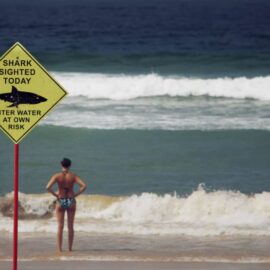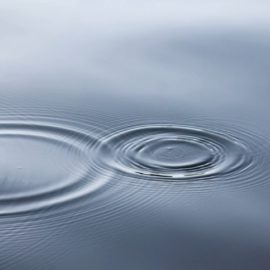

This article is an excerpt from the Shortform book guide to "Blue Mind" by Wallace J. Nichols. Shortform has the world's best summaries and analyses of books you should be reading.
Like this article? Sign up for a free trial here.
Why are activities in and around water so satisfying? What are the health benefits of aquatic activities, and how can you take advantage of them?
In Blue Mind, Wallace J. Nichols argues that water has a profound impact on our well-being and health because it induces a calming, meditative state, which he calls the Blue Mind state. He explains how people can benefit from swimming, surfing, diving, fishing, and boating.
Continue reading to learn about several ways you can enjoy aquatic activities and reap their benefits.
The Health Benefits of Aquatic Activities
There are many ways to enjoy the benefits of water. Nichols explains that it’s not just being in water that induces a Blue Mind state, but also being on the water, being near the water, or even looking at images of water. He describes several ways people obtain the health benefits of aquatic activities.
Exercise: Swimming
Nichols explains that swimming is appealing because of the body’s buoyancy, which causes a 200-pound body to weigh only 10 pounds in the water. The water also provides resistance, so moving our bodies through it stretches and exercises all the body’s muscles while taking pressure off the joints and ligaments.
(Shortform note: Exercises that take pressure off the joints are known as low-impact exercises. These exercises are well-suited for people recovering from injury or dealing with joint issues, and anyone can benefit from alternating between low-impact and high-impact workouts. Swimming is particularly advantageous because it can be high intensity—meaning it’s extremely physically challenging—while still keeping pressure off the joints.)
Additionally, the physical pressure of being immersed in water—known as hydrostatic pressure—can provide a full-body soothing sensation. This pressure also restricts circulation to the extremities, which causes the heart to work harder to pump blood throughout the entire body, resulting in greater blood flow. This makes the body’s arteries relax to reduce the resistance against the blood flow, and this arterial relaxation leads the body to activate the same neurotransmitters that activities like meditation activate. The lungs also have to work harder to function under the pressure of the water—and deal with the increased blood flow—and all of this together can greatly improve cardiovascular strength.
Swimming also provides aerobic exercise, which promotes the release of stress-relieving hormones and neurotransmitters like endorphins and endocannabinoids. This, combined with the rhythmic breathing required for swimming, produces a state similar to that induced by meditation.
| Hydrostatic Pressure and the Body Hydrostatic pressure also provides benefits like reduced swelling: In the same way that it puts pressure on the blood vessels, the force of the water pushes fluid out of the extremities by compressing the body, and it actually provides greater compression than medical stockings designed specifically to reduce swelling. It also applies constant stimulation to the skin and its nerve endings, which causes the nervous system to reduce these nerves’ sensitivity, dulling your pain receptors and thus reducing pain. The increased blood flow also clears lactic acid from the muscles, lessening post-exercise soreness. Additionally, the meditation-like effects of hydrostatic pressure make water a great place to practice yoga or other mindfulness exercises. Finally, if you want the aerobic exercise of swimming but don’t enjoy it, there are other aerobic exercises you can do in water, including walking or running, balancing, planking, bicycling, and pushups. |
Extreme Water Sports: Surfing and Diving
Another way of interacting with the water is through surfing. Nichols suggests that surfing is particularly conducive to the Blue Mind state because it requires surfers to be deeply attuned to the movement of the sea and monitor it very closely to see when they might be able to catch the perfect wave. Surfing also affects the brain in a similar way as do many addictive substances: When engaging in an activity that’s novel, risky, rewarding, and challenging, the brain produces a rush of dopamine that we can easily become dependent on. Both surfing and addictive drugs meet all these criteria. Because of this, Nichols often recommends surfing as a positive addiction that people can substitute for harmful addictions.
(Shortform note: Some experts argue that addictions can’t be positive because addictions by definition are damaging to the user’s life or well-being. While an activity like surfing may produce some of the same chemicals as an addictive substance would, it doesn’t affect the brain in the same way—by making the body feel like the activity is necessary for its survival. Experts suggest that what we refer to as positive addictions are just good habits, but even seemingly good habits are harmful if they begin to dominate our lives or we continue to engage in them even when they become detrimental. For people who are prone to addiction, the idea of substituting one addiction (even a “positive” one) for another may actually be counterproductive.)
Diving is another popular water sport that Nichols discusses. Diving is particularly appealing to the senses because it involves looking at and touching things under the water—a very different experience from the things we’re able to look at and touch on land. Diving also magnifies the effects of hydrostatic pressure, which increases by one atmosphere every 10 meters below the surface. This comes with some risks, as being exposed to too much pressure can result in nitrogen narcosis (a state of euphoria or confusion from nitrogen entering the bloodstream), and coming up too quickly can result in the bends (or decompression sickness). However, diving is associated with greater adventurousness, less anxiety, and greater health overall.
| Sensory Benefits of Scuba Diving Diving not only offers new sensory experiences, but it even enhances some senses. Nearby objects under the water appear both larger and closer than they are (though the way light interacts with water also means that distant objects appear farther away than they are). Sound also moves faster through water than it does through air, so it can feel like you’re surrounded by the sounds of the ocean and marine life. Divers are often discouraged from touching objects under the water due to safety concerns, but the feel of the equipment against your skin and the pressure and temperature of the water create an intense tactile experience as well. While diving offers a rich sensory experience, it should only be performed with sufficient training and supervision according to your experience level since, as Nichols indicates, diving is a high-risk activity. |
Recreation: Fishing and Boating
Some people prefer to be near the water rather than in it or under it. Fishing is a great way to do that, explains Nichols. Fishing has been shown to calm the mind and reduce stress, and the physical motions involved in fishing provide effective therapies for many ailments. For example, the motions involved in fly-fishing help improve the strength and flexibility of chest muscles in people who’ve had breast cancer surgery. The focus and patience involved in fishing can also be good therapy for people with PTSD or other disorders. It’s also at a skill level that’s accessible to most people, which can make it a better option than more difficult activities like swimming or diving.
(Shortform note: While the physical act of fishing can have many benefits for people, some suggest that it’s a cruel practice that unnecessarily harms fish. Groups devoted to veganism or animal welfare often note that fish can feel pain and that it’s wrong to cause an animal pain for recreation. While the issue of whether or not fish feel pain has been debated over the years, recent research suggests that they do and that they’re not only consciously aware of physical pain, but they can also experience emotional and psychological pain. Knowing that fishing causes real pain might negate some of the stress-reducing benefits that Nichols lists.)
Boating and similar activities like kayaking also offer the benefits of being in proximity to water. Activities like rowing and paddling provide a great upper-body workout, and sailing boats that require the work of multiple people can improve confidence, teamwork, and social skills. The main appeal that Nichols hears from boaters is the sense of freedom it provides—being out in the open air, immersed in nature, away from the constricting demands of daily life.
(Shortform note: While boating and kayaking provide a sense of freedom, they are among the more expensive methods of water recreation that Nichols recommends and thus require significant resources to engage in. And to achieve the physical and social benefits of these sports, you have to take significant precautions to avoid injury or other risks. It’s important to purchase reliable equipment and maintain it well, use good judgment in potentially dangerous conditions, and (as with other forms of water recreation) avoid practices that may be harmful to the environment.)
Working: Sailing and Commercial Fishing
Some professions also require working on the water. Sailors and commercial fishers spend long stretches of time interacting with the water to earn a living and provide food and transportation. According to Nichols, these workers also cite the sense of freedom as a major reason they’re drawn to these professions, along with the pride they take in their work and the challenge of taking on the sea every day.
These challenges can sometimes be very dangerous. Due to the demands of keeping a ship operating for 24 hours a day, sailors are often sleep deprived, and they often deal with heavy machinery that can cause severe injury. Overfishing can also deplete fish populations and has led to government bans on fishing in some areas, decreasing the availability of such jobs and making them a less viable option for earning a living.
| Risks of Fishing and Overfishing In addition to the high risk of injury, commercial fishing has a fatality rate nearly 30 times higher than the fatality rate of the average American job. Half of these deaths come from vessel disasters (sinking or capsizing), and many others come from falling overboard. While overfishing remains a problem, some countries like Iceland have implemented policies that effectively protect fish populations while still enabling commercial fishing so that fisherpeople can maintain their employment. However, not everyone who works on a boat takes the job on willingly: Human trafficking is a serious problem in the industry, as migrant workers are often forced into labor to make up for shortages. For such people, being on a boat represents the opposite of freedom and pride in one’s work. |

———End of Preview———
Like what you just read? Read the rest of the world's best book summary and analysis of Wallace J. Nichols's "Blue Mind" at Shortform.
Here's what you'll find in our full Blue Mind summary:
- How water has a profound impact on our well-being and health
- Society’s relationship with water and how it might be improved
- Activities you can do in or around water to reap the healing benefits






